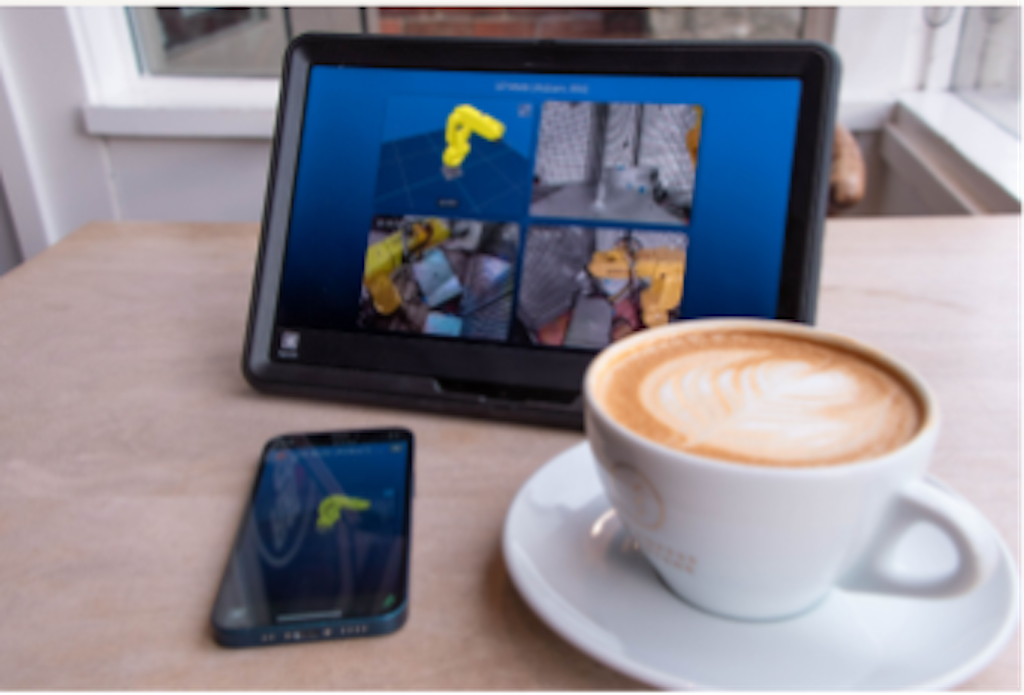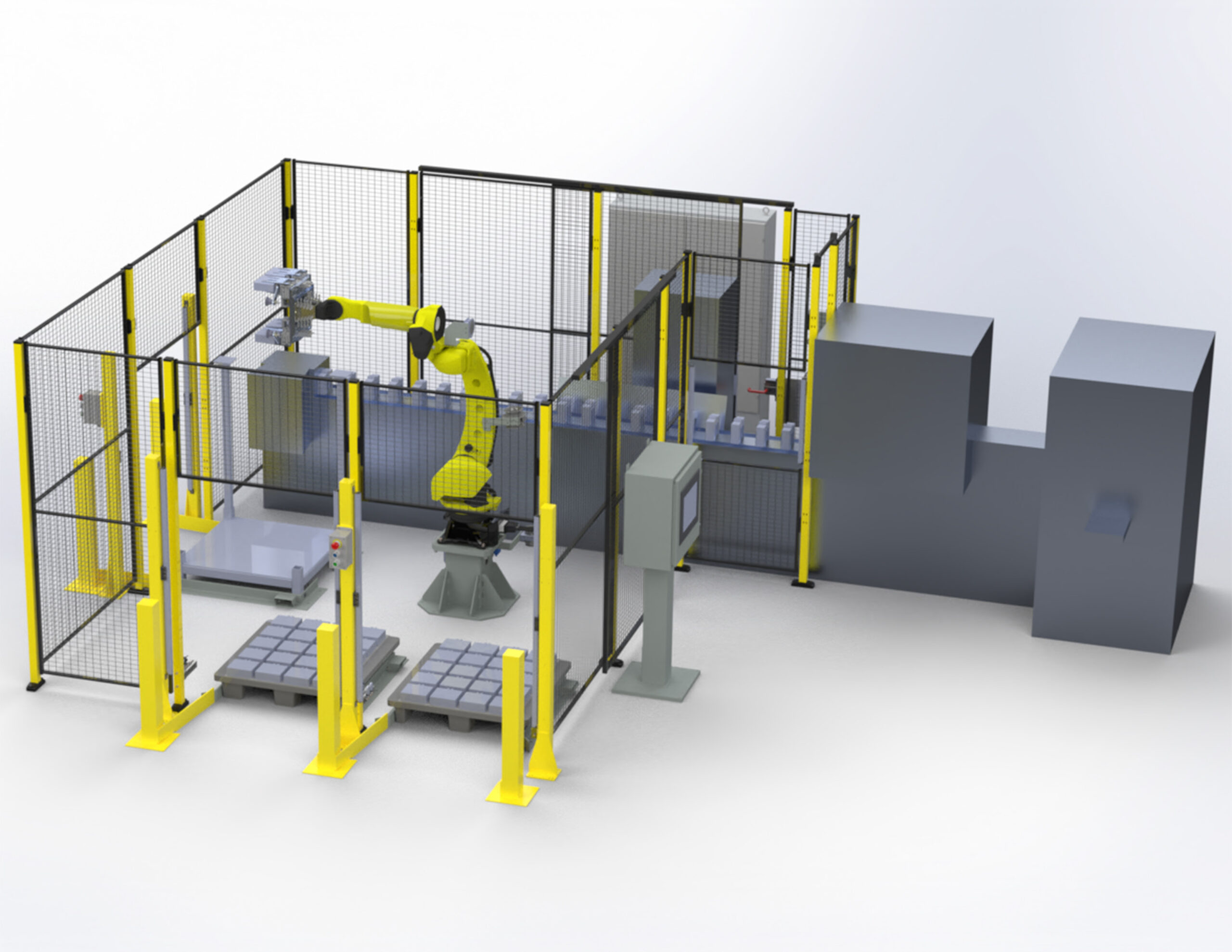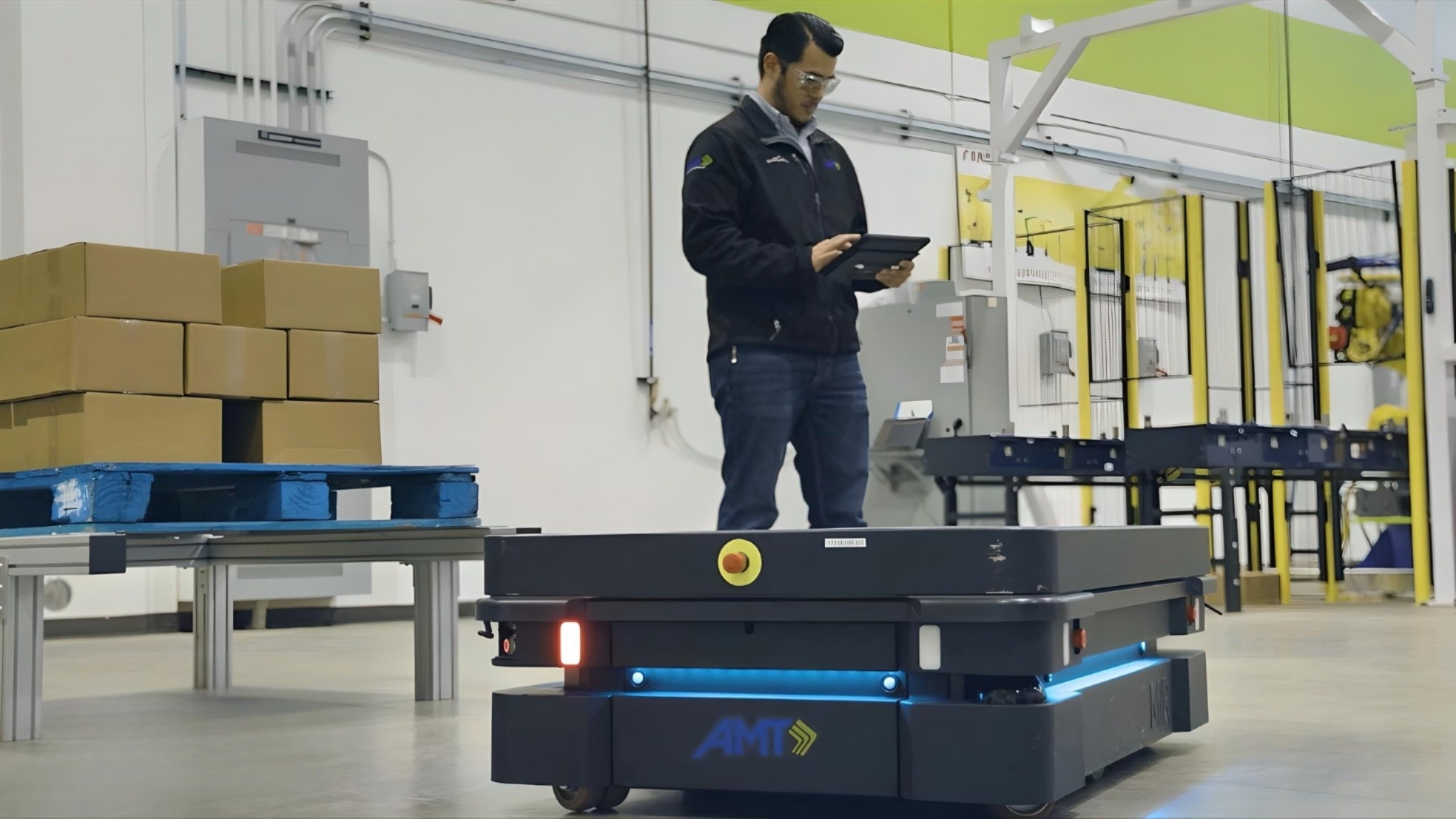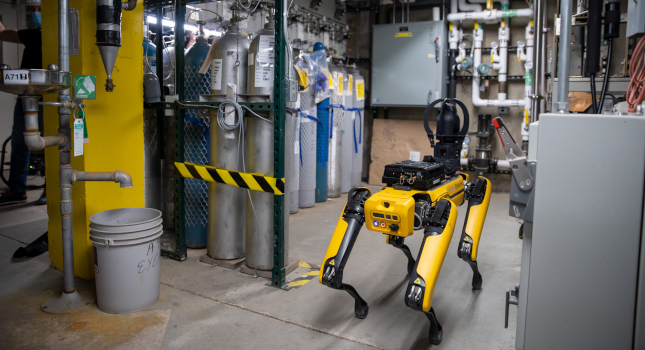How year-round automation eliminated inconsistencies on stock products and boosted output by cutting cycle time by 50%.
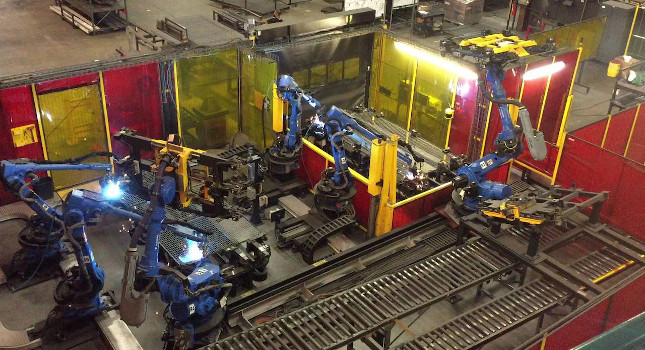
Application note: A custom robotic workcell using vision-guided robots helped increase consistency and throughput in a welding application with a 50% drop in cycle time. Learn about the project, goals, evaluation, types of robots and other automation, and challenges resolved.
1. For a recent successful robotics implementation, please give a brief description of the project.
A producer of wire partition products, WireCrafters LLC (Louisville, Ky.) sought to implement a custom robotic workcell to maintain consistent and cost-effective production of 20 stock Style 840 partition panels, optimizing production and meeting the seasonality of customer demand.
2. What was the scope of the project and goals?
Challenging demand
The manual manufacturing of 20 stock Style 840 partition panels was difficult to maintain during peak seasons. The established MIG welding process for one-foot increment panels (ranging from 1- to 10-in. wide, in heights of 4- and 5-in.) required one to two skilled workers using a fixture table to complete all angle frame and mesh welds manually. While an effective method for fabricating stock partition panels, hiring temporary workers to help fill the uptick in seasonal demand for the product grew expensive, and the manual fabrication of the panels resulted in product variation for weld quality and lot sizes.
Process evaluation
Delivering quality products to meet precise customer specifications is vital to any manufacturer’s success, and meeting customer demand for stock panels proved difficult with the manual process that was in place. As a result, company leaders made the decision to evaluate the shop process to address production dilemmas.
The main expectation for the process review was to gain knowledge on how to create smaller batch sizes and gain better inventory returns that were more in line with the company’s lean objectives. At first, there was a concentrated focus on the idea of creating a repeatable weld point, but increased costs and greater variability from upstream methods encouraged the customer to switch focus toward robotic automation.
It was determined the ideal solution to deal with the application’s plethora of moving parts was via a combination of vision-guided robotics (VGR) and other advanced technologies. High-performance welding robots would need specific machine vision to determine optimal weld line location for specified welds on the panels being produced.
Solution implementation
To help design a custom robotic solution and to ensure that the integration process ran smoothly, the company turned to a system integrator. After in-depth research and process review, the optimum workcell design was achieved and implemented the consistent use of an automated panel welding system to robotically weld angle frame components and mesh to angle frames for the production of stock partition panels.
3. What types of robotics and other automation, controls, or instrumentation were involved?
The custom robotic solution featured six robots: four long-reach 20-kg payload capacity robots with power supply for welding, and two high-performance 50-kg payload capacity handling robots.
To equip the system to detect variance in the weld target location, each welding robot was equipped with a 2-D vision system with vision application software and a camera. The combination of hardware and software enabled the robots to return critical X- and Y-axis information to the robot controller for the strategic management of required complex vision issues.
4. What were particular challenges outlined in the project and how were those issues resolved?
Aside from the need for a robotic vision, the prime hurdle, perhaps, was the time spent waiting for technology to catch up to the concept the customer had in mind. In the 12 years spent searching and testing various technologies to help create smaller batch sizes and gain better inventory returns, the Industrial Internet of Things (IIoT) came to fruition, prompting the development of highly-capable and affordable robots, as well as the exact 2-D machine vision system needed to address the variance in weld target location.
5. Can you share some positive metrics associated with the project?
Overall, implementation of the custom-designed automated panel welding system has improved efficiencies and leveled production. Cycle time for the manufacturing of stock panels had been reduced by 50%, and the workcell has eliminated seasonal production challenges, creating a consistent schedule to meet year-round customer demand. The workcell operates 20 hours a day, four days a week to maintain regular production. Fridays are used to fill extra demand when necessary. Requiring minimal personnel investment, only two operators are needed per 10-hour shift to manage the welding system and its subsequent part transfer.
6. What were the resulting lessons learned or advice you’d like to share, for your firm or the customer(s) involved?
Robotic automation has delivered transformative results. The custom configuration provided the customer the flexibility needed to adapt to market fluctuations, and it has contributed to the company’s strategy for future success.
Josh Leath, product manager, welding at Yaskawa America Inc. – Motoman Robotics Division. Edited by Chris Vavra, associate editor, Control Engineering, CFE Media, [email protected].
MORE ANSWERS
Keywords: Robotics, grippers, robotic automation
A producer of wire partition products , WireCrafters LLC (Louisville, Ky.) sought to implement a custom robotic workcell to maintain consistent and cost-effective production.
Vision-guided robotics and machine vision were used to help improve production consistency and make operations more efficient.
Overall, implementation of the custom-designed automated panel welding system has improved efficiencies and leveled production.
Consider this
How can robotic automation improve operations at your facility?
